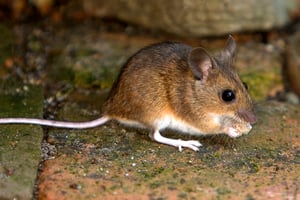Are you starting to see bugs or rodents enjoying the comforts of your home? As we transition from summer to fall, many pests are preparing to invade our homes. With cooling temperatures and the leaves beginning to change, pests are looking for a warm cozy place to live with plenty of food. If you live in a climate that experiences winter, can you blame them?
Here are some common types of fall pests that may be invading your home.
Ants
While ants can be seen in our homes at other times of the year, they become more active now. Because they hibernate in winter, this is their last chance to store up on food.
Spiders
If you’re walking through your home and suddenly have cobwebs on your face or in your hair (yuck), it may be time to do some simple cleaning. Consistently running your dehumidifier in your basement and taking down cobwebs with a broom or vacuum can decrease the number of spiders in your home.
Fall Bugs
This group of bugs includes stink bugs, boxelder bugs, and lady beetles. If your home gets a lot of sunlight, you may see these bugs clamoring on the outside of your home, looking for a way in. While they won’t cause damage to your home, they’re a nuisance.
- Stink bugs. These bugs are harmless. However, if they anticipate danger or are stepped on or squashed, they emit a nasty odor. While they won’t cause damage to your home, unfortunately, once they get into your home, they’re difficult to get rid of.
- Lady beetles. They’re often mistaken for ladybugs; these bugs are good because they feed on other bugs that cause crop damage. Like stink bugs, they have an odor and can cause some people to experience mild allergies. If they’re in your house, you may see yellowish stains on your windows or walls.
- Boxelder bugs. Like stink bugs, they’re harmless and more of a nuisance.
Yellow Jackets/Wasps
These flying and stinging bugs are very annoying and aggressive this time of year. While we’re trying to enjoy the remaining warm weather days, they’re trying to eat and drink everything. They can dampen an outdoor party or a trip to the pumpkin farm. Their goal is do what they can to prepare the queen for winter survival. Check out the blog “Five tips to deal with crazy fall wasps”.
Rodents
Rodent infestations can cause significant damage to your home if they go undetected. I know several people who’ve had mice in between their ceilings and walls which led to complete drywall removal. Damage caused by rodents isn’t covered by most insurance policies. To learn more about what to watch for and how to get rid of them, check out the blog “When you’re away – and even when you’re home – the rodents will play!”
Here are some tips to keep these pests out of your home.
1. Inspect your home for entry points. Pests can sneak into your home through very small entry points. Areas to inspect include:
- Chimney. Make sure you have a cap or mesh around it to keep them out.
- Attic vents. Many new homes with attics have vents on the side to aid in roof ventilation. A small hole in the mesh attached to the vents could be a welcome invitation to pests. If you can do so safely, inspect them now for damage. If you have a two-story home, make sure you have someone help you with the inspection process.
- Doors. Check your garage door, as well as your house doors to make sure the weather stripping is in good condition. Worn out material won’t seal the doors adequately and will make for an easy entry point.
- Loose or worn screens. If your screen has warped with time or if the material itself is brittle, consider replacing it. Loose fitting or worn screens make it easier for pests to enter your home.
- Dryer vent. Inspect to make sure the damper isn’t suck open or broken. Also check that it’s still firmly secured to your house.
2. Clean up your yard. As plants begin to decay and leaves start to fill your yard, remove the debris from your yard as often as you can. A yard with a thick layer of leaves can make a great habitat for unwanted pests. Removing dead plants and shrubbery along your foundation can eliminate hiding spots. Lastly, getting rid of leaves can help prevent lawn disease.
3. Keep your kitchen clean. Wipe up spills and crumbs immediately. If you have a garbage can in your home or garage, make sure it’s properly sealed to prevent a feeding frenzy for pests. Lastly consider storing food in plastic containers.
4. Keep your garage clean. Keeping your garage clean and clutter free can be extremely difficult. We spend a lot of time organizing and cleaning our garage. Now’s a great time to remove unnecessary clutter from your garage. Also, never store firewood in your garage or near your home. Stacked firewood can make for great accommodations for mice. Periodically check for mouse droppings or other evidence of infestation such as gnaw marks.
5. Look around your door. Before entering your home from the outside, take a quick glance around to make sure nothing is going to run in when you open the door.
6. Keep an eye on your pet’s food dishes. If you keep food in your pet’s dish all the time, watch for droppings around the bowl. A full bowl of food is an easy target for rodents.
If you’re experiencing problems with pests, contact your local pest control professional. They can take a walk around your property and provide the appropriate solutions.
Scott Stueber on Sep 10, 2019 9:00:00 AM
Leave a Reply